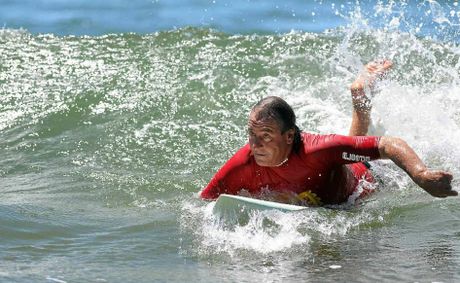To begin with, rather than paddling straight out the back into the line up, it’s best to catch a few broken whitewater waves in shallower water. You should have your ideal trim/paddling position at this stage, so point your board directly towards the beach and as the whitewater approaches paddle towards shore. The wave should pick you up and push you forward which is an unmistakable feeling, however if your board pearls or nosedives you have set off positioned too far forward on the board, likewise if the wave passes under you are positioned too far back on the board.
It’s fun to catch and ride a few to the beach whilst still laying down to get the feeling of the wave, after that it’s time to stand up which we will go onto in the next section. Once you have the hang of catching white water it’s time to use those paddling skills and get out into the lineup to catch the unbroken waves which is what surfing is all about. Once in the lineup, past where the waves are breaking, sit up and straddle your board (you might want to practice the art of sitting on your board as it takes a little time to find your balance). Always face out to sea until you are ready to catch a wave. Practice swinging the nose of the board left or right so that you can easily turn around to catch an oncoming wave. Pick a wave that has not broken and be sure to sit far enough out among the sloping swells, not where the waves are standing up straight.
As a wave approaches, turn the nose of your board toward the beach, lay down and begin paddling. As you feel the wave lift you and your board, paddle as hard as you can and lean your weight forward. The natural tendency is to lean back to keep the nose from going under water, but that will only slow your momentum which in not conducive to wave-catching.
Lean forward but raise your chest so that your weight is just above the center of the board. You should now be sliding down into the trough of the wave. The first phase of surfing will entail that you wait until you are in the flat water in front of the wave before you stand up. However, the ideal is to begin standing just as you feel the pull of the wave. Now you are ready to work on standing.


